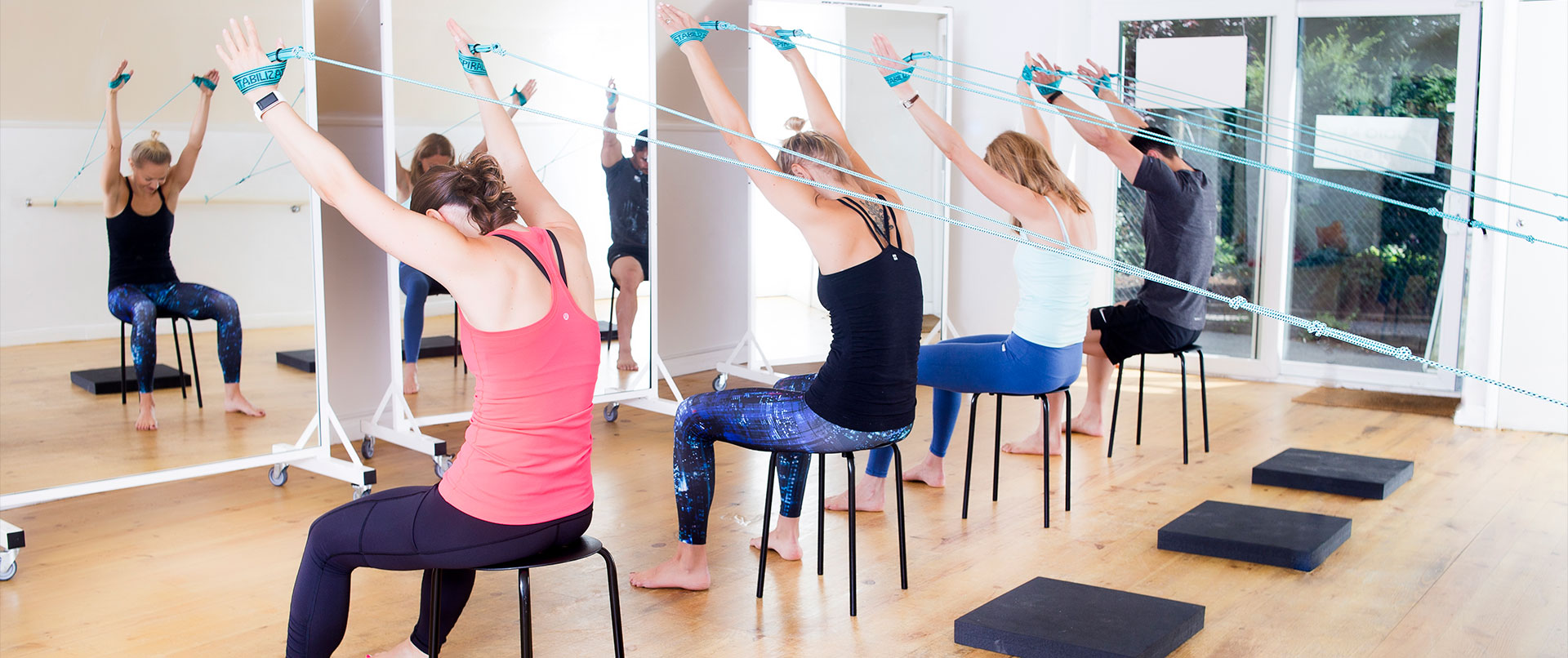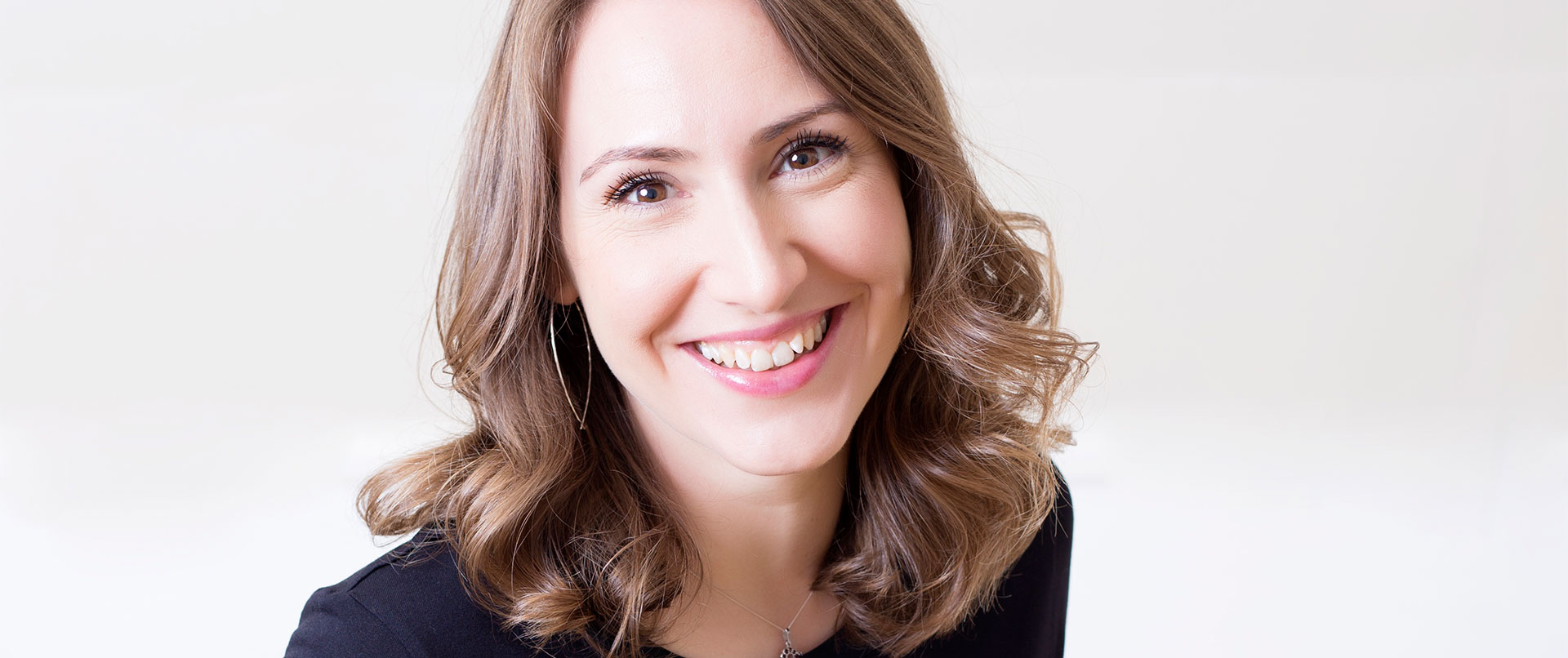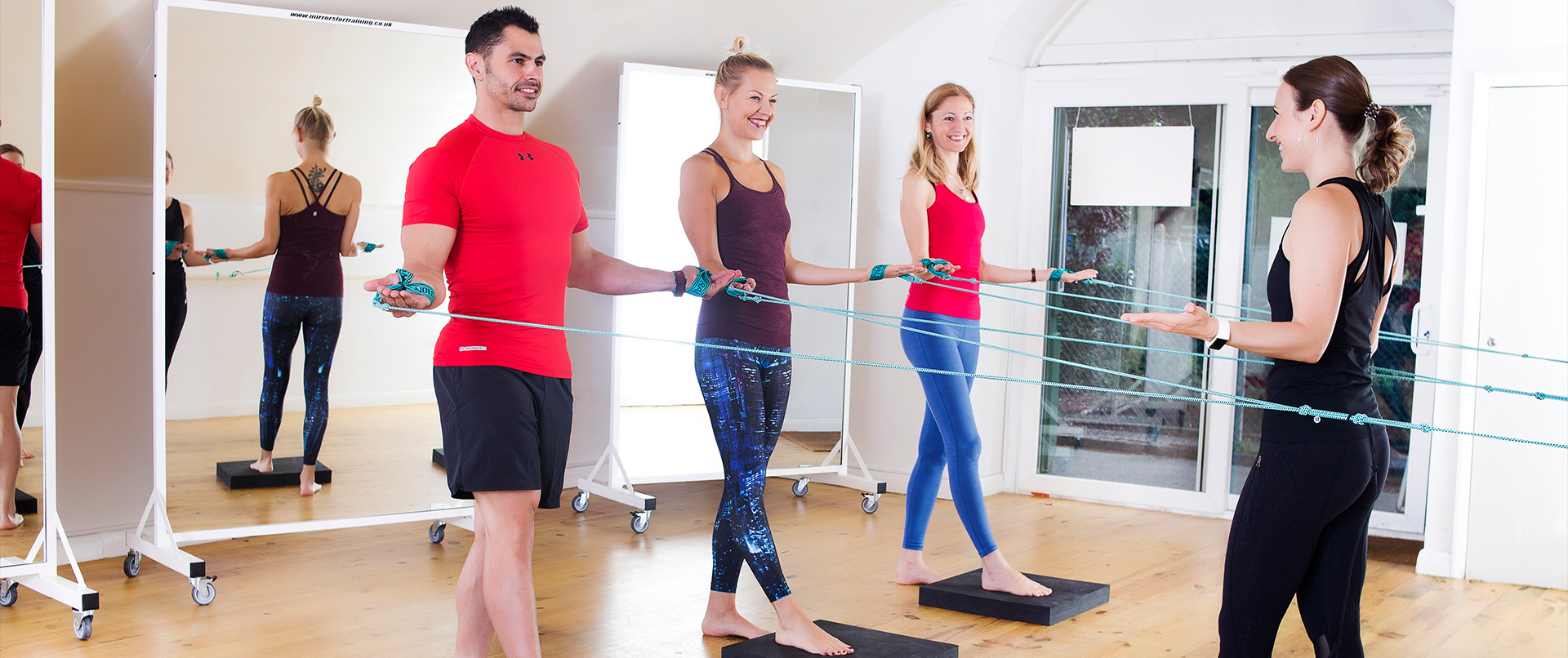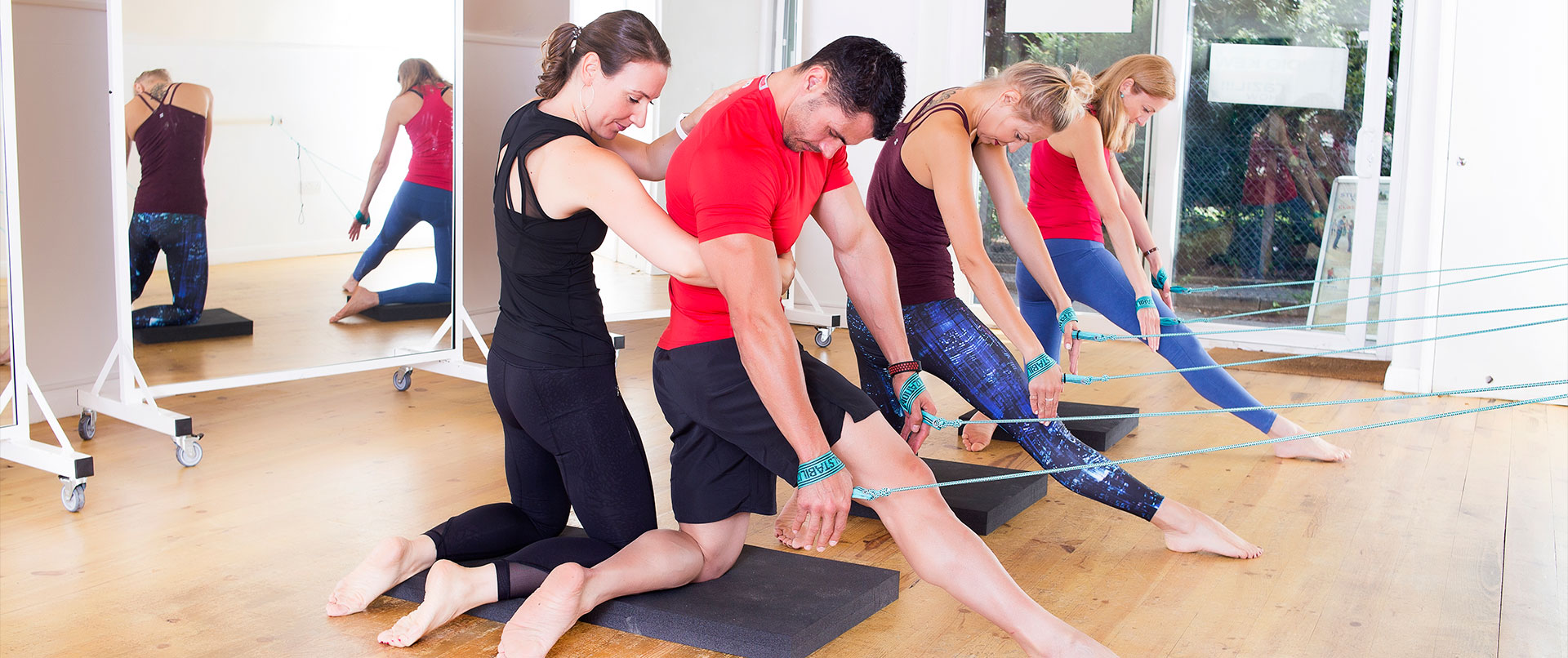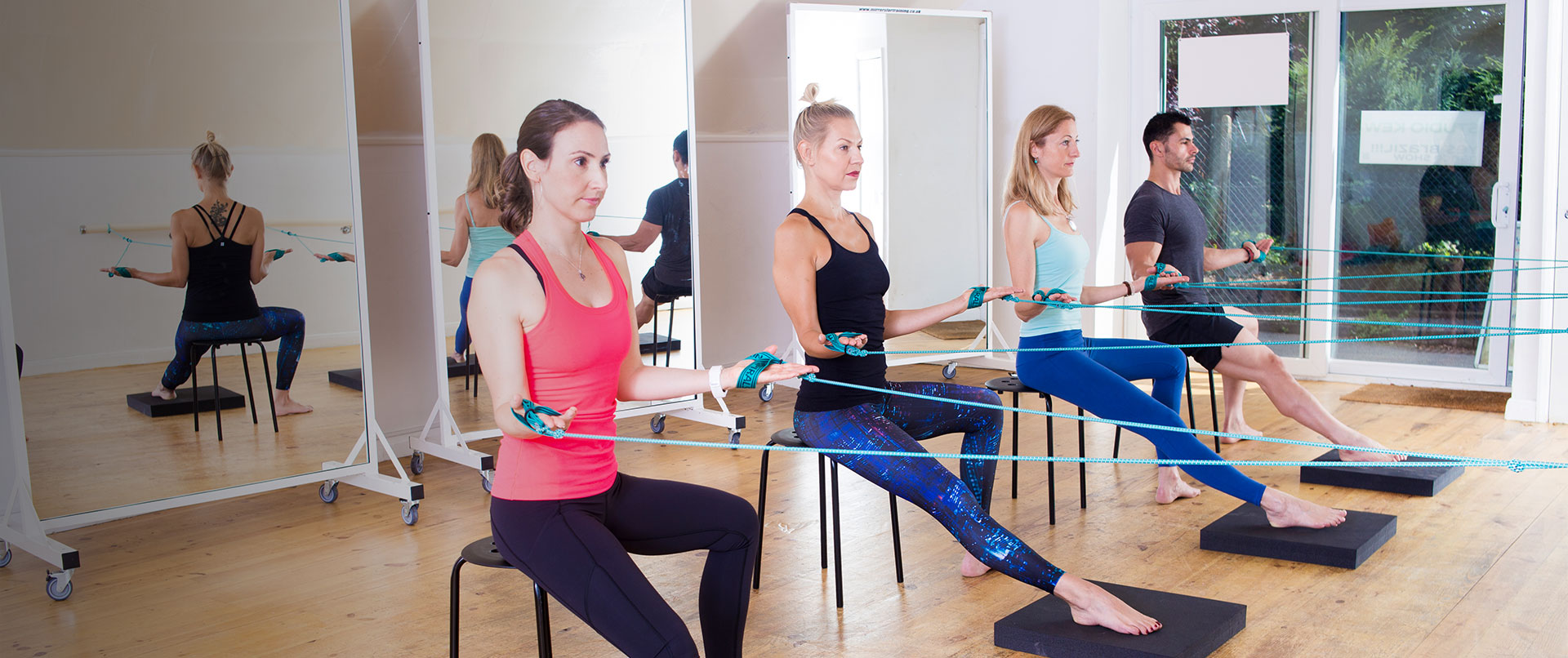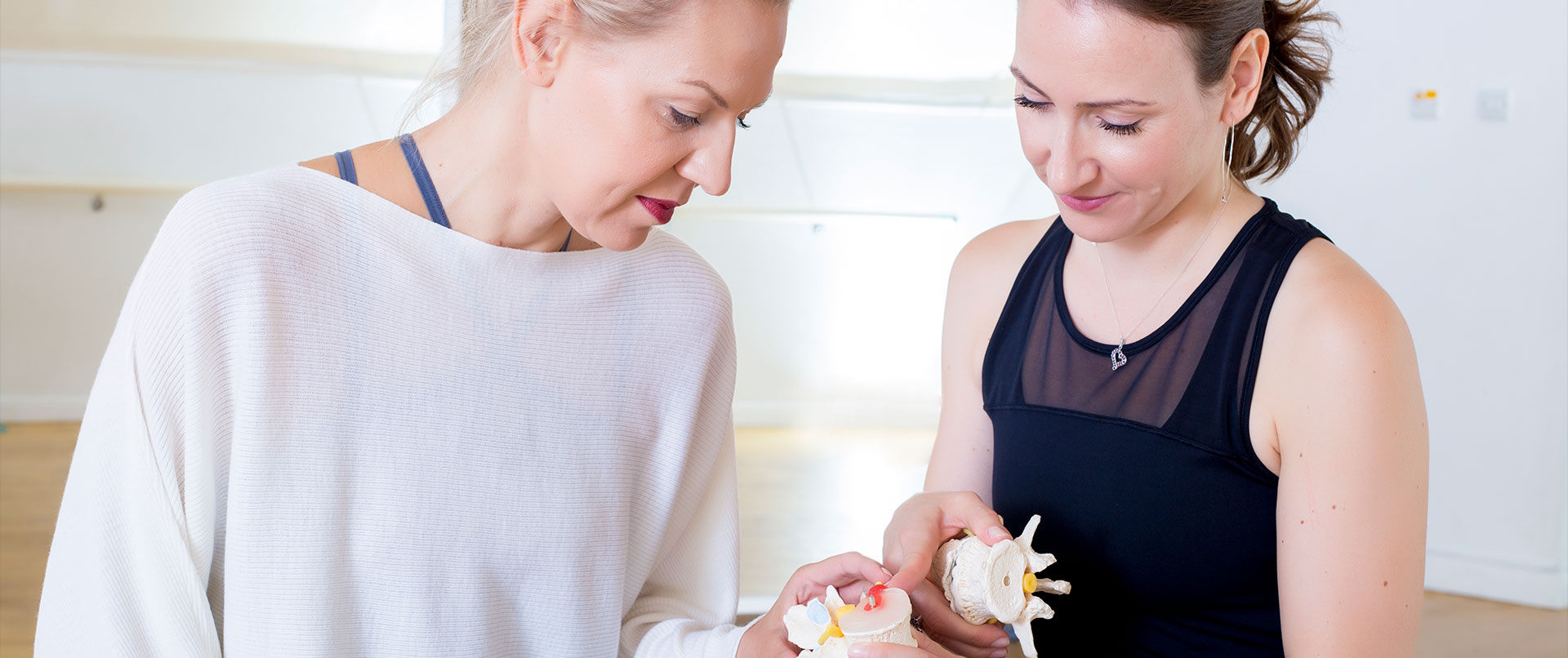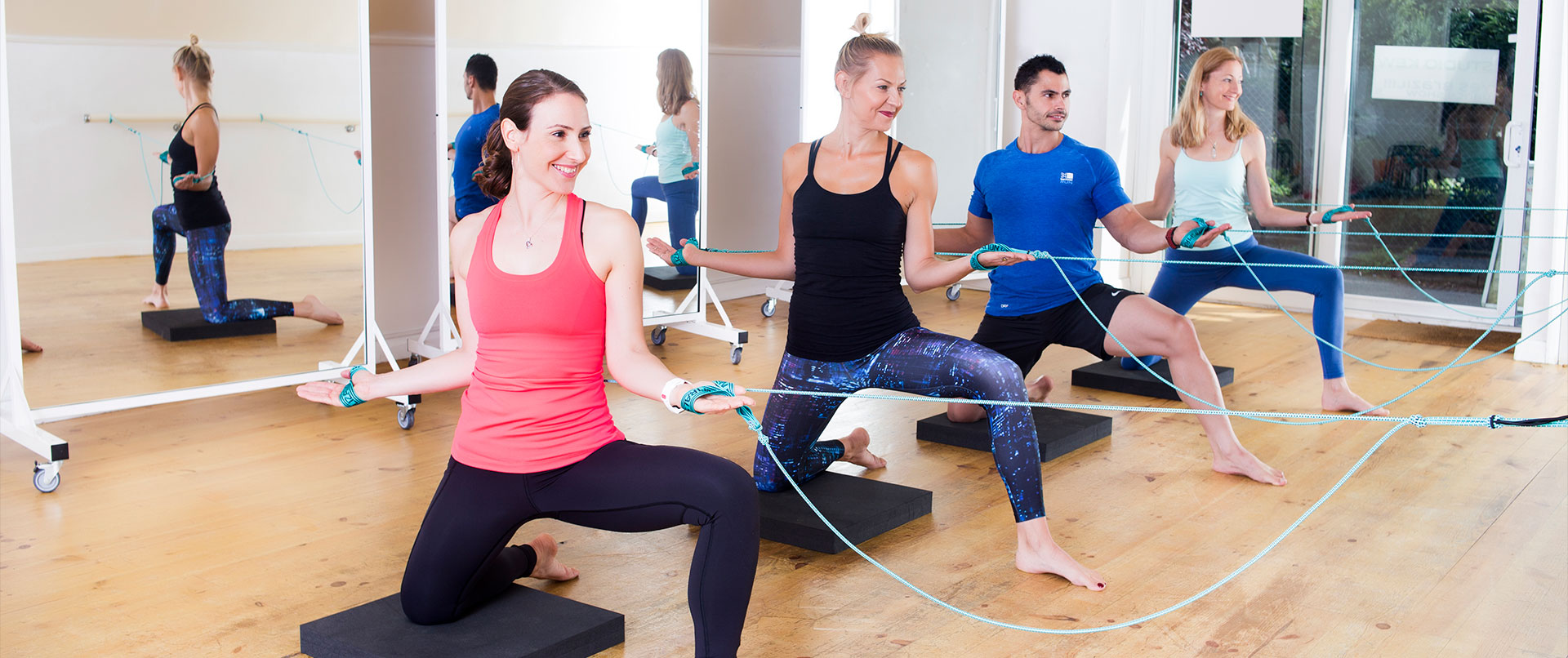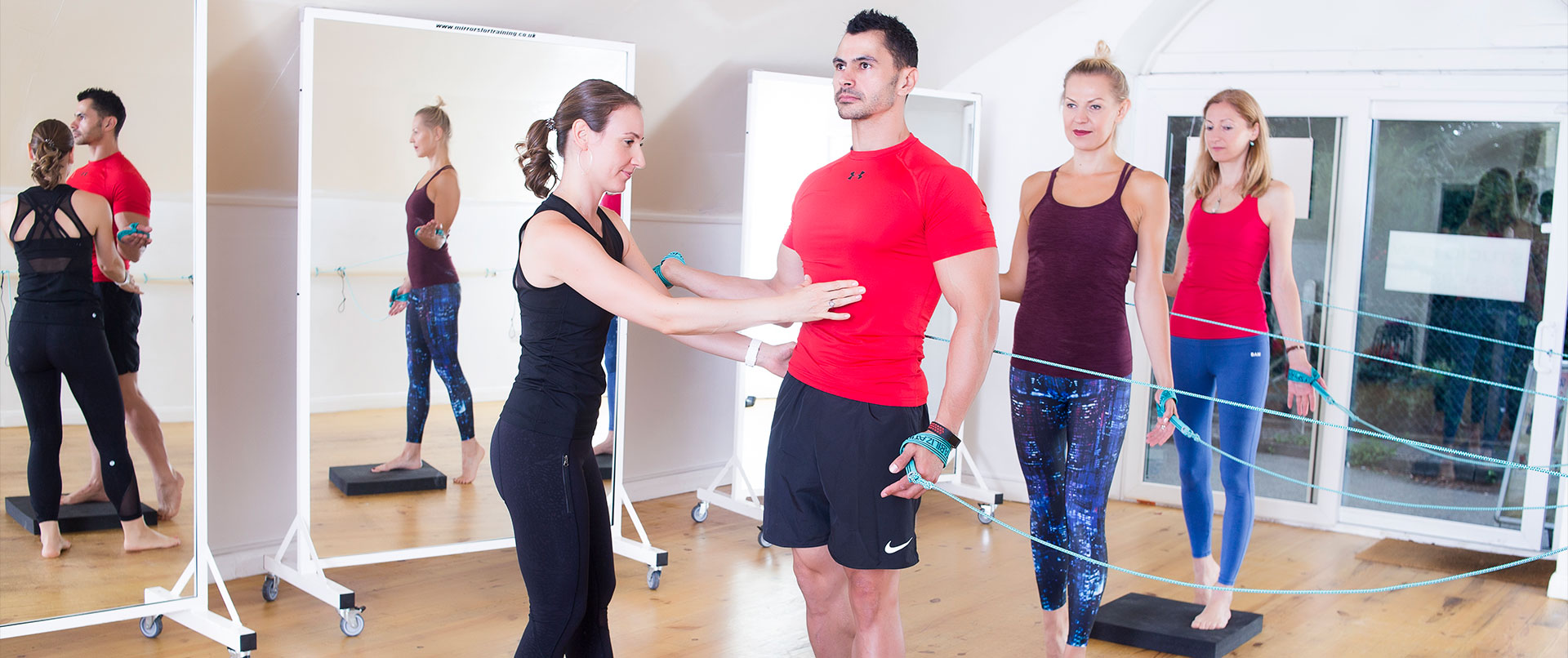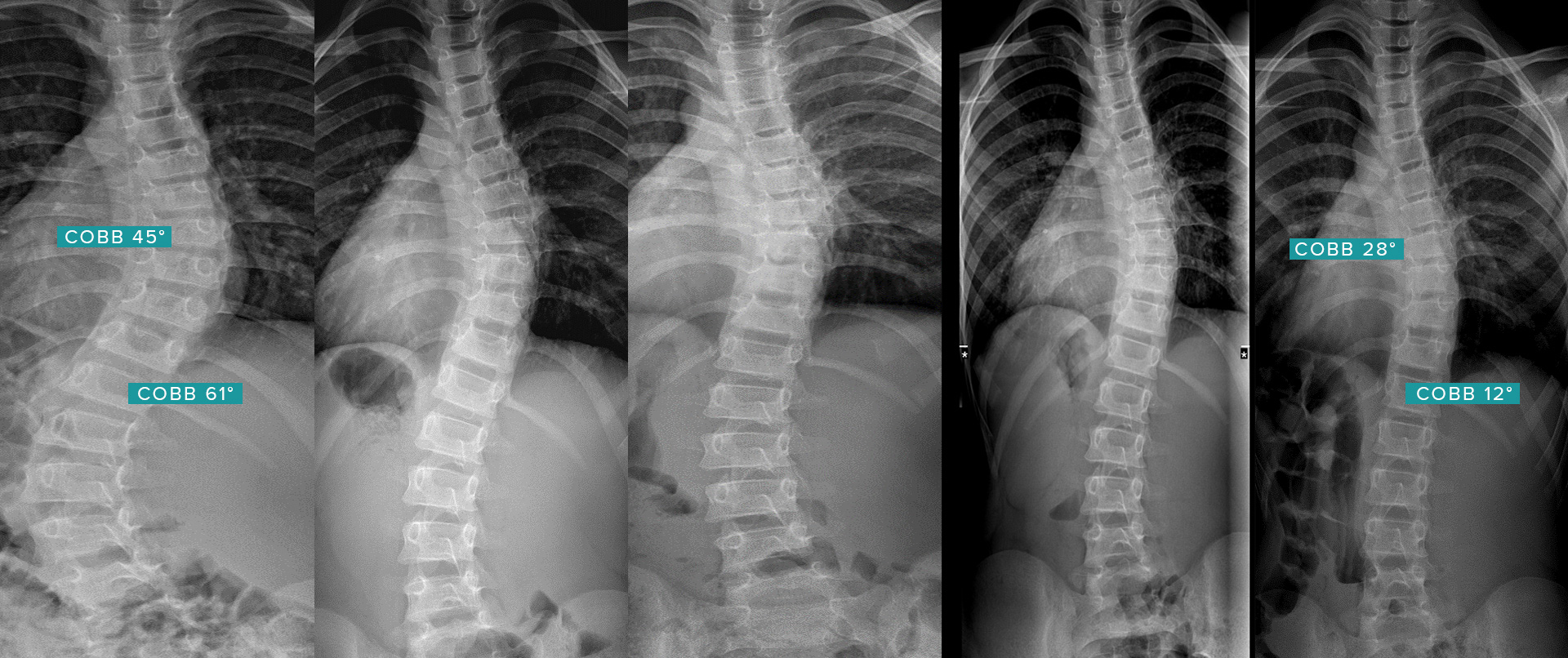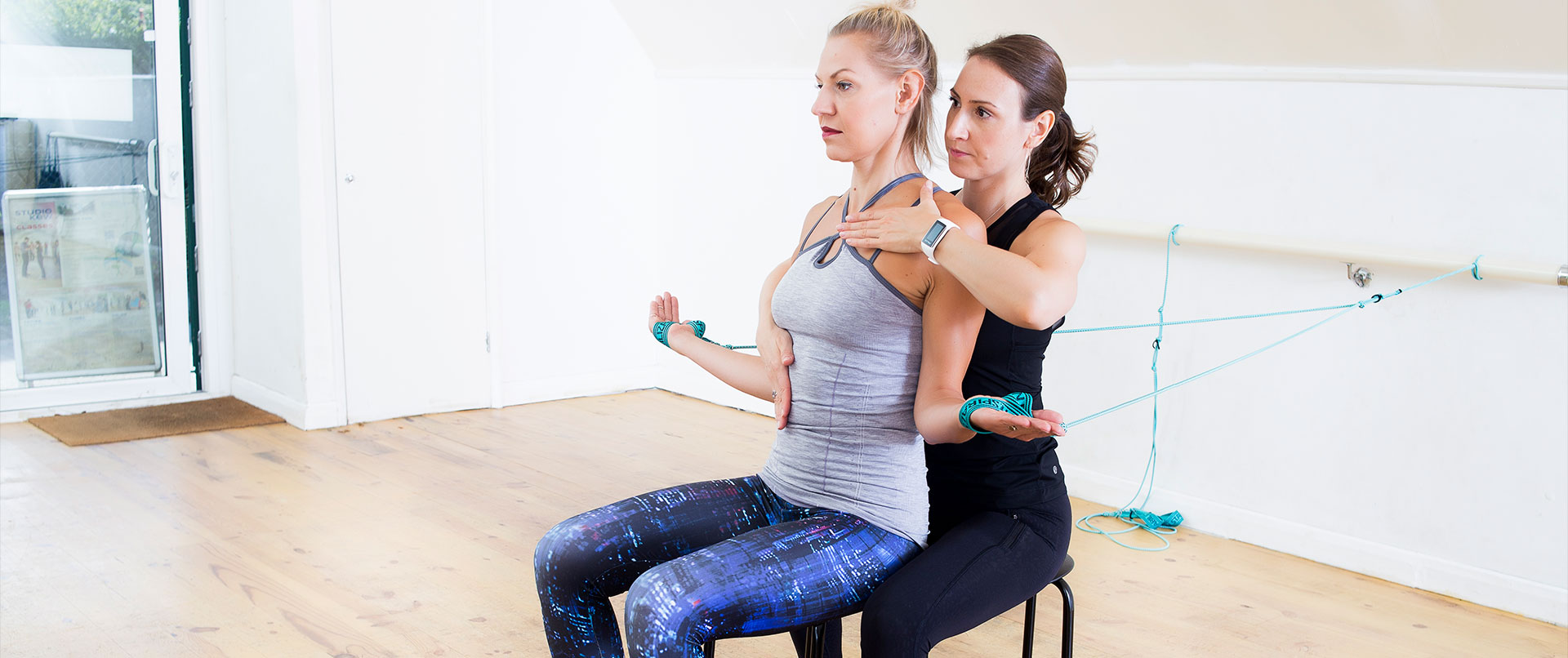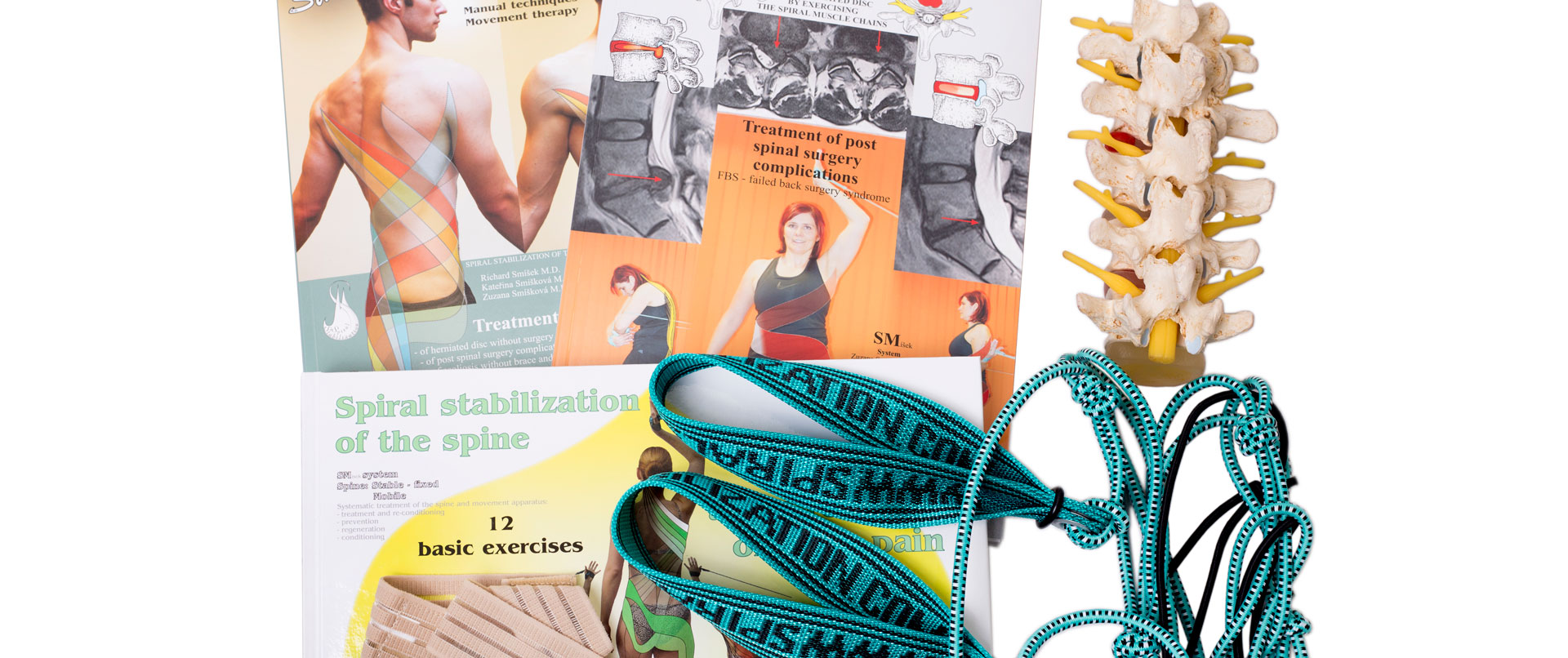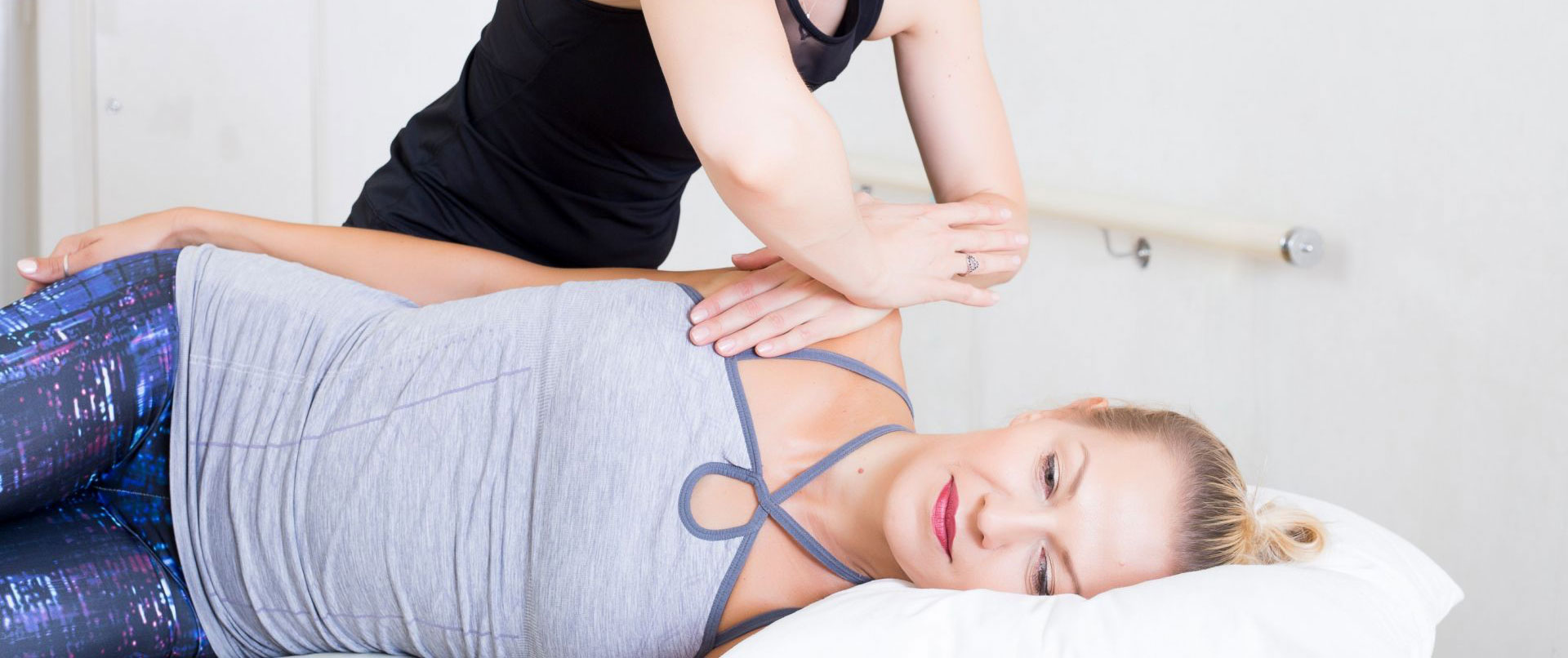Thank you to the Spiral Stabilization rehabilitation clinic in Prague for the provision of all of the patient images on this page.
BACK PAIN/LOWER BACK PAIN/SCIATICA
Muscle tightness/shortening (in the vertical muscle chains, especially paravertebral muscles along the spine, hip flexors) causes flexion/bending in the joints and incorrect posture. This muscle tightness, in addition to muscle weakness, causes muscle imbalances in the body and results in a spinal and joint compression causing back pain.
Spiral Stabilization exercises eliminate those muscle imbalances. Each exercise stretches muscle tightness and strengthens muscle weakness. Strengthening of the spiral muscle chains (abdominal muscles, back muscles between the shoulder blades, glutes) creates natural spinal traction and decompression. This regenerates the spine, relieves pressure on the intervertebral discs and joints, relieves back pain, nerve pain and chronic back pain.
Spiral Stabilization also treats ankylosing spondylitis.
DISC HERNIATION/SLIPPED DISC/DISC DEGENERATION
The Spiral Stabilization method spirally stabilises the body, creates stabilising muscle corset that, with the help of muscle chains, develops upward strength, stretches the spine upwards and relieves pressure on the intervertebral discs and joints. This allows for their regeneration and treatment.
Our treatment can heal disc herniation (complete resorption of the sequestrum) within 3-6 months or up to a year depending on the client’s condition. Treatment is faster and more effective when the exercises are combined with manual therapy techniques.
Spiral Stabilization prevents the need for surgery, reoccurrence of disc herniation and prevents post-op complications for clients who have already undergone back surgery.
Spiral Stabilization also treats spondylosis and spinal stenosis.
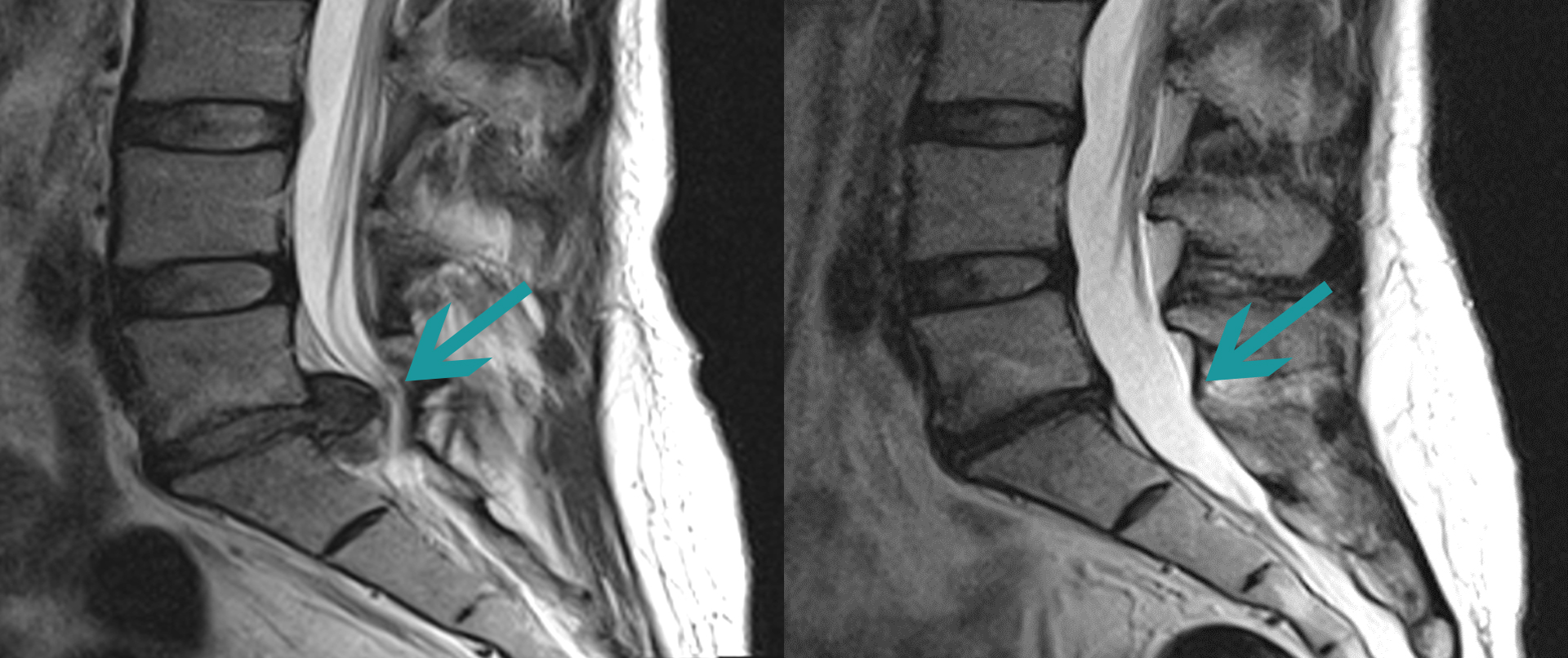

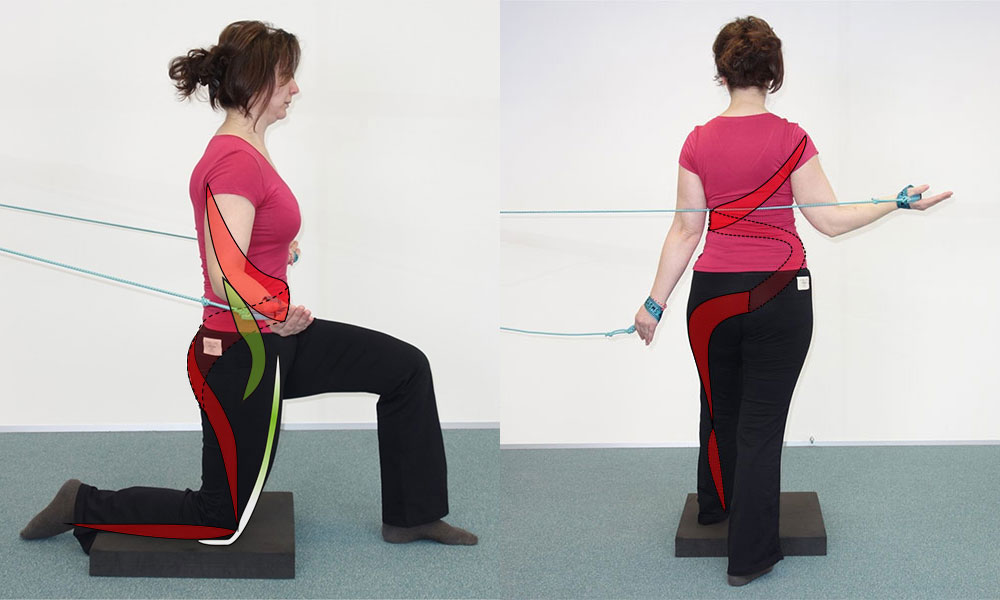
SCOLIOSIS
Spiral Stabilization treats scoliosis in children and adults. Depending on the client’s condition, we can achieve a full compensation of the curve (straighten the spine to central body axis) to 1° Cobb angle in children.
Wearing a plastic brace without an exercise programme causes serious muscle imbalances within the body that leads to an accelerated degeneration of the spine. The scoliotic curve usually worsens when patients stop wearing a brace.
Scoliosis is a gait (walking) coordination and stabilisation disorder. Incorrectly coordinated walking aggravates scoliosis.
Spiral Stabilization treatment focuses on eliminating muscle imbalances and creating muscle corset. We stretch muscle tightness to support the correct functioning of spiral chains. We strengthen spiral muscle chains (interscapular muscles, abdominal oblique muscles and glutes) that results in spinal traction and the straightening of the scoliotic curve.
Treatment for adults with scoliosis stabilises the spine, stops the scoliotic curve from worsening and the spine from further degeneration. Clients improve their quality of life and become pain-free.
Spiral Stabilization prevents the need for scoliosis spinal fusion surgery and treats and prevents post-op complications for clients who have already undergone spinal surgery.

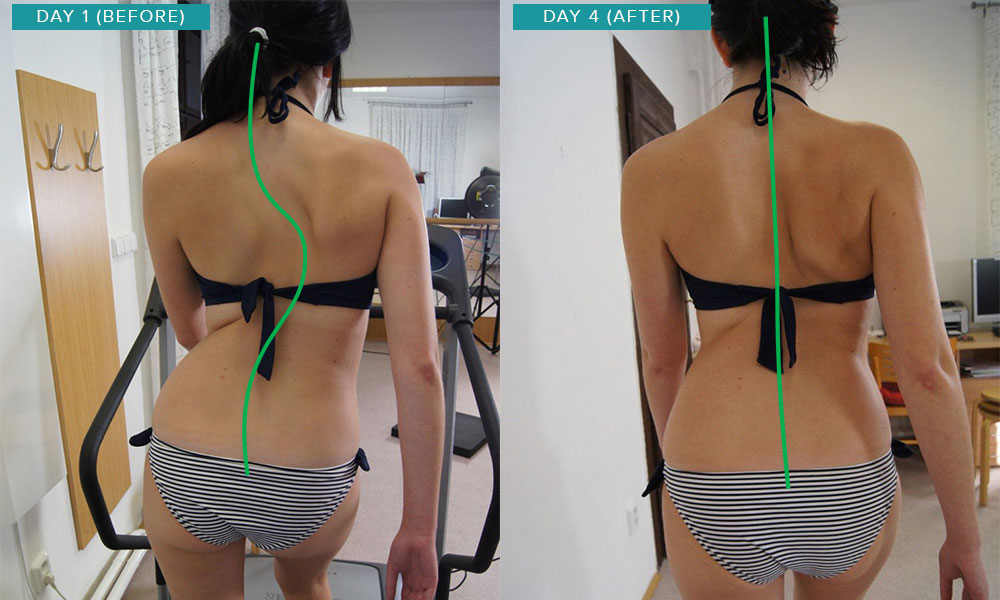
KYPHOSIS/LORDOSIS
Spiral Stabilization exercises eliminate muscle imbalances. Each exercise stretches muscle tightness and strengthens muscle weakness. Strengthening of the spiral muscle chains (abdominal muscles, back muscles between the shoulder blades, glutes) creates stabilising muscle corset that develops upward strength, stretches the spine upwards, relieves pressure on the intervertebral discs and joints and improves posture.
Spiral Stabilization treats and prevents hyperkyphosis, hyperlordosis and Scheuermann’s disease.
SPINAL POST-OP COMPLICATIONS
Patients who have undergone back surgery often suffer from pain and further complications after surgery. Some patients were even pain-free before surgery but then start suffering from pain following surgery. Spiral Stabilization treats and prevents those complications and prevents further spine degeneration following surgery.
Surgery doesn’t eliminate muscle tension in the front of the spine (iliopsoas, hip flexor) or at the back of the spine (erector spinae). This muscle tension causes spinal compression and compression of the intervertebral discs, and this brings about pain. Complications often occur within the overstressed segments above (or below) the segment that was operated on. Therefore, surgery treats the symptoms of the patient’s condition whereas Spiral Stabilization treats the cause of the patient’s condition.
We stretch the aforementioned muscles to reduce tightness and to strengthen muscle weakness within the abdominal wall to create spinal traction and decompression.
It is important for patients who have undergone spinal fusion surgery to spirally stabilise the body with a muscle corset which postpones the development of degenerative changes within the spine, especially in the segments above and below the fusion.
HIP AND KNEE SURGERY/HIP AND KNEE PAIN
Tension in the vertical muscle chains causes compression and degeneration of the joints. It is important to spirally stabilise the body, strengthen spiral chains that naturally create decompression, relieve pain and prevent joint degeneration.
Spiral Stabilization exercises prepare patients for hip or knee surgery and provide a sufficient rehabilitation programme to follow surgery.
We focus on the treatment and prevention of unstable walking following hip/knee replacement surgery. Patients should learn basic Spiral Stabilization exercises before surgery. These exercises will correct posture, align the body into an upright body axis and stretch tightness in the legs. It is important to learn the correct walking coordination with the help of supportive poles. Patients can already start exercising (under supervision) on the 5th day after surgery in a sitting position and on the 15th day in a standing position. Patients should then continue exercising at home.

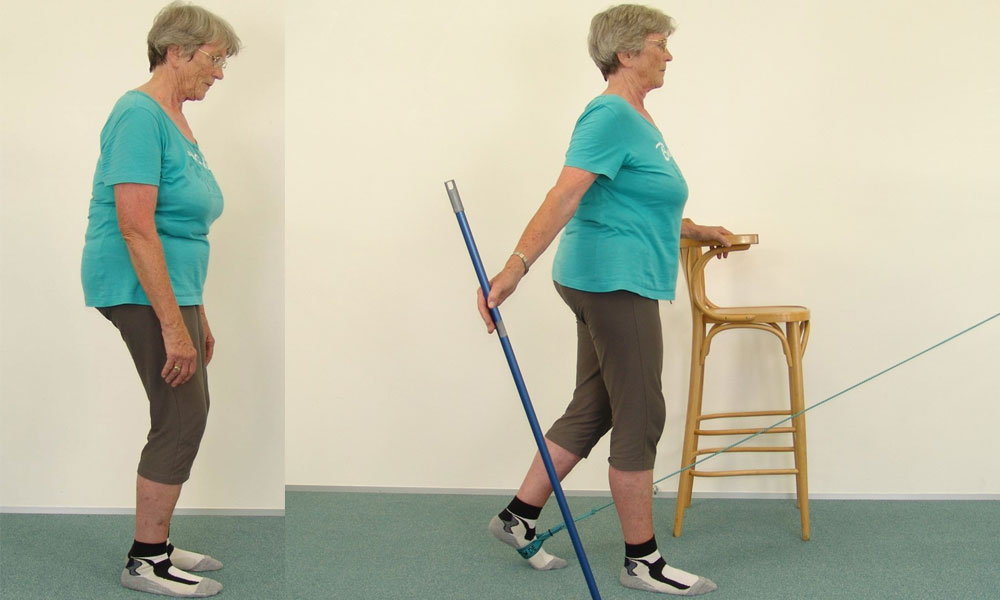
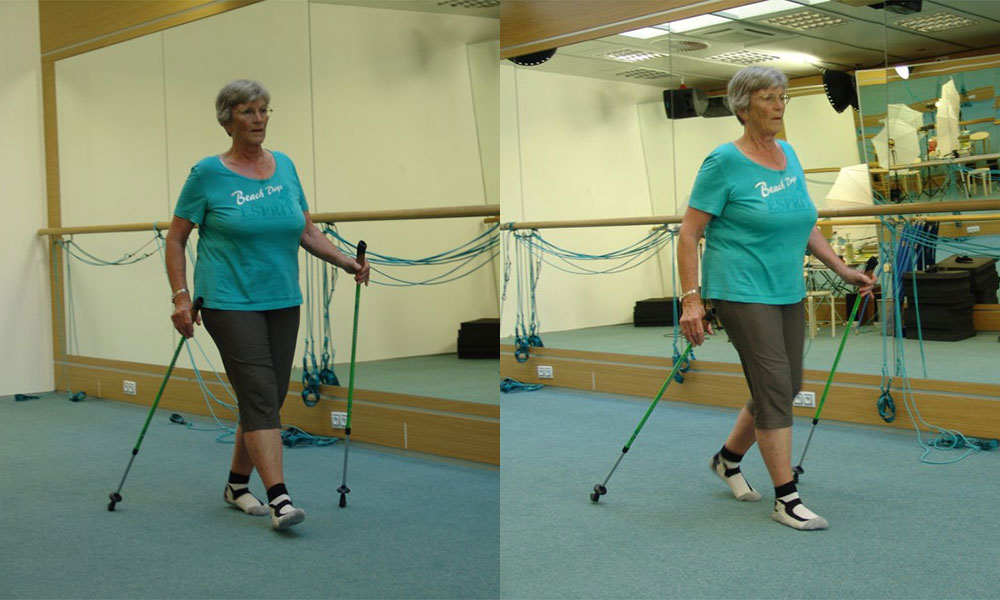
SHOULDER AND NECK PAIN
Spiral Stabilization exercises eliminate muscle imbalances in the body (stretch muscle tightness, strengthen muscle weakness), stretch the spine upwards and relieve pressure on the intervertebral discs that cause neck pain. Exercises will correct posture, align the body into an upright body axis, correct shoulder position and re-align the head.
By bringing the body into balance we eliminate pain and gradually improve the range of motion in the shoulder.
HEADACHES/MIGRAINES
Spiral Stabilization exercises eliminate muscle imbalances in the body (stretch muscle tightness, strengthen muscle weakness), stretch the spine upwards and relieve tightness in the neck. Exercises will correct posture, align the body into an upright body axis, correct shoulder position and re-align the head.
REPETITIVE STRAIN INJURY/TENNIS ELBOW/CARPAL TUNNEL
Spiral Stabilization exercises eliminate the muscle imbalances in the body (stretch muscle tightness, strengthen muscle weakness) that are often the cause of the client’s condition.
Exercises are performed with the Spiral Stabilization resistance cord that has a specially designed handle. The handle allows for the correct exercise movement and ensures that the fingers, palm of the hand, forearms and the upper trapezius muscles (neck muscles) are completely relaxed during exercise.
HALLUX VALGUS/BUNION/FLAT FOOT
Hallux valgus and flat foot are caused by incorrect function of muscle chains. It is important to have the correct movement (down and back) in the shoulder girdle during movement, especially walking, that activates the spiral muscle chains. Contraction within the spiral chain (tibialis anterior, abductor hallucis) activates the foot arch and brings the big toe into its correct straight position.
It is recommended to progress the exercise programme to single leg exercises that will build the foot arch. You can wear the Spiral Stabilization bunion corrector barefoot at home and while performing our exercises.


FULL CONDITION LIST
Diseases of the musculoskeletal system and connective tissue
- M40.- Kyphosis and lordosis
- M41.- Scoliosis
- M42.- Spinal osteochondrosis
- M43.- Spondylolysis
- M43.1 Spondylolisthesis
- M45.- Ankylosing spondylitis
- M47.- Spondylosis
- M48.- Other Spondylopathies
- M48.0 Spinal stenosis
- M50.0 Cervical disc disorder with myelopathy
- M50.1 Cervical disc disorder with radiculopathy
- M50.3 Other cervical disc degeneration
- M51.0 Lumbar and other intervertebral disc disorders with myelopathy
- M51.1 Lumbar and other intervertebral disc disorders with radiculopathy
- M51.4 Schmorl´s nodes
- M53.0 Cervicocranial syndrome
- M53.1 Cervicobrachial syndrome
- M53.2 Spinal instabilities
- M54.- Dorsalgia
- M54.1 Radiculopathy
- M54.2 Cervicalgia
- M54.3 Sciatica
- M54.4 Lumbago with sciatica
- M54.5 Low back pain
- M54.6 Pain in thoracic spine
- M16.- Coxarthrosis (arthrosis of hip)
- M17.- Gonarthrosis (arthrosis of knee)
- M20.1 Hallux valgus (acquired)
- M21.4 Flat foot (pes planus) (acquired)
- M23.- Internal derangement of knee
- M75.- Shoulder lesions
- M76.- Enthesopathies of lower limb, excluding foot
- M79.1 Myalgia
- M81.- Osteoporosis without pathological fracture
- M35.7 Hypermobility syndrome
Symptoms, signs and abnormal clinical and laboratory findings, not elsewhere classified
- R26.- Abnormalities of gait and mobility
- R42.- Dizziness and giddiness
- R51.- Headache
Diseases of the nervous system
- G43.- Migraine
Endocrine, nutritional and metabolic diseases
- E66.0 Obesity due to excess calories
Diseases of the circulatory system
- I10.- Esential (primary) hypertension
- I25.- Chronic ischaemic heart disease
Diseases of the raspiratory system
- J45.- Asthma
Symptoms and signs involving the circulatory and respiratory systems
- R00.- Abnormalities of heart beat
- R07.- Pain in throat and chest
Diseases of oesophagus, stomach and duodenum
- K30.- Dyspepsia
Diseases of the genitourinary system
- N70.1 Chronic salpingitis and oophoritis
- N81.- Female genital prolapse
- N94.- Pain and other conditions associated with female genital organs and menstrual cycle
- N96.- Habitual aborter
- N97.- Female infertility
Symptoms and signs involving the urinary system
- R32.- Unspecified urinary incontinence
Diseases of the genitourinary system
- N30.2 Other chronic cystitis
- N41.- Inflammatory disease of prostate
- N46.- Male infertility
Diseases of the digestive system
- K40.- Inguinal hernia
- K43.- Ventral hernia
- K56.- Paralytic ileus and intestinal obstruction without hernia
- K91.- Postprocedural disorders of digestive system, not elsewhere classified
Diseases of the nervous system
- G36.- Other acute disseminated demyelination
- G80.- Celebral palsy
Symptoms and signs involving the nervous and musculoskeletal systems
- R26.- Abnormalities of gait and mobility
BENEFITS
- Non-surgical
- Curative and preventative
- Affordable and effective
- Easy to learn exercises
- Light and portable exercise equipment
- Aids back pain relief
- Aids joint pain relief
- Restores movement in the joints
- Promotes spine regeneration and decompression
- Creates muscle corset, relieving pressure on the intervertebral discs and joints
- Aligns the spine into a central body axis
- Corrects muscle imbalances
- Strengthens weak muscles
- Improves flexibility
- Supports correct posture
- Re-establishes the loss of natural movement
- Develops natural coordination and balance
- Ensures stability during rest but mainly during movement
